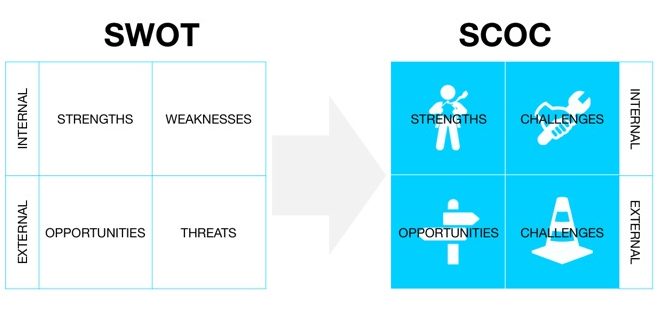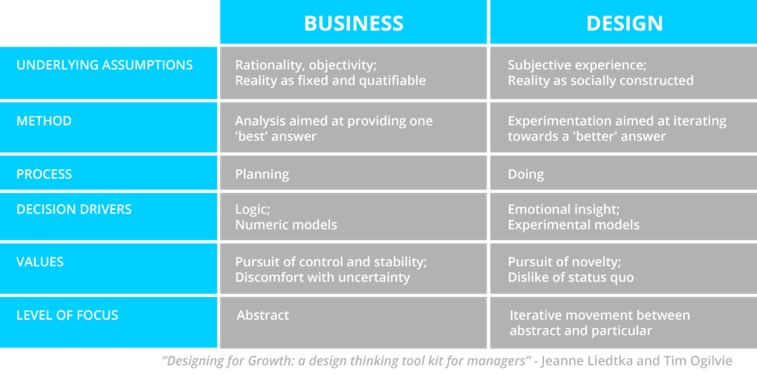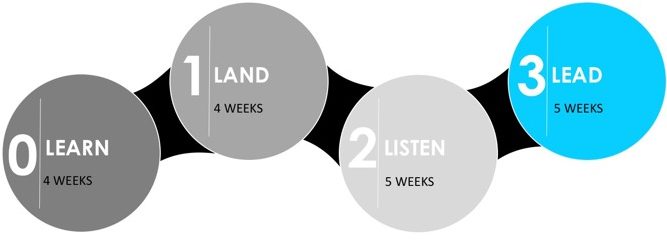Bringing established frameworks to a new level, with our experience and insights.
A growing number of research and countless case studies as well as our own studies confirm how Positive Psychology, Mindfulness and Behavioural Science, applied to the Morden workplace delivers exceptional results. We not only use established frameworks and bring the best out of them, but also develop our own from years of experience with clients.

Understanding SWOT as we do and viewing it through the lens of positive psychology, we took the best of both and reframed the proposition: We translate Weaknesses and Threats into Challenges (internal & external). Internal Challenges, like implementing new process and structures, we will need to overcome in the future and external Challenges are risks we need to consider. With this simple reframing exercise, we achieve the same diagnostics SWOT gives us, but this time with a perspective that will encourage a more solution driven mind-set.

With SCOC we analyse with an asset-based approach: what works well (Strengths) and on what can we build on to solve our current and future internal Challenges. We take this solid groundwork and now look at Opportunities, matched with our strengths, and examine any external Challenges that might come along with an open, positive mind-set. This positive reframing will allow your mind to stay open, curious and creative. You are using the power of your brain to contemplate strategies and not your arms and legs to fight these wild animals. You will see the difference in discussion when you chair your next strategy meeting.
SCOC is of course not a comprehensive positive strategic planning framework, like it’s SWOT Grandfather, it can help with your analysis and preparation for strategic decisions. The wider framework you are using for your strategic planning process should be embedded in your positive and mindful leadership, with purpose, appreciation and diversity at its centre.
What is Appreciative Inquiry (AI)?
Appreciative Inquiry is a philosophy developed by David Cooperrider in the 1980s; since then, it has evolved into an approach and a framework to help teams and organisations become more efficient, focused, and productive. This collaborative approach starts by identifying and understanding an organisation’s strengths, its greatest opportunities, and people’s aspirations for the future. It then creates the framework to design the systems, processes and organisation that will enable that future, and to create a plan to get there.
A good AI intervention builds on the power of inquiry and storytelling – words create worlds. It is inclusive; all stakeholders participate in addressing the challenge and co-creating the future. It is strengths-based; every person’s and organisation’s largest areas of growth are their areas of strength. And it is inspirational; human change, whether it is on a personal level or on a larger scale, requires a lot of positive emotions.
But most importantly, a successful AI intervention is generative. It creates the capacity to think differently about issues, and to create new ideas and new ways of dealing with them.
The AI cycle is composed of four phases, each of them building on the previous.

How is AI used in business?
AI is successfully used to address a wide range of challenges in all area of business, such as:
- strategic planning;
- leadership development;
- people management;
- process redesign;
- new product development;
- alliances and joint ventures; and
- organisational culture change.
An AI intervention can be as short as a meeting, as wide as a survey, and as holistic as a whole organisation summit. Most often, depending on the challenge, we recommend starting with a 2-3-day workshop. Contact us for further details on how we can help you.
Design thinking for optimal performance
What is design thinking?
It is a systematic approach to problem-solving which is driven by three core beliefs:
-
Empathy – start by establishing a deep understanding of human needs
-
Invention – discover new possibilities
-
Iteration – use the first solutions only as stepping stones to a
Design thinking in business context
Most of us would agree that design and traditional business thinking and decision-making processes are quite different.

If so, why and how do they come together to create value?
The challenges of the modern business environment are more complex and multifaceted than ever before. In fact, it seems that in this fast-paced, highly volatile, uncertain, and ambiguous world, application of the design thinking principles in business can lead organisations to be fast, responsive, and flexible, allowing for a much more efficient and effective response to their challenges.
Core characteristics of the design thinking process:
- Focuses on meeting genuine human needs (those of external or internal customers);
- Creates solutions for complex issues;
- Uses prototyping to explore multiple solutions;
- Allows for failure to find the best possible solution; and
- Works well with multiple uncertainty factors.
Design thinking is certainly not a panacea. However, if you are dealing with challenges that are human-centred, complex, and with a lot of uncertainties, and you need solutions that are simple, adaptable, effective, and efficient, design thinking might be the right tool for you.
Design Thinking as a tool kit has four questions and ten tools representing the fusion of design and business. The journey moves from examining the current reality, to imagining the ideal future, to using data to make multiple choices, to finally brining prototypes to the marketplace for testing and validation.

The solution
We developed and are using an intuitive 4 step process that fuses positive leadership, behavioural science and mindfulness, enabling personal leadership development while also empowering individual and team performance. It holds true to our experiential learning philosophy of KNOWING: DOING: BEING.

LEARN: Self-Discovery and Awareness
This is our ZERO point (Ground Zero), the time after you signed the contract and before you start you new role, we capture the enthusiasm of this leader to focus on self-awareness, behavioural fitness and strength discovery. We have all been in this situation before we start the new role, like with our new year’s resolutions where we promise ourselves to be a better listener or not to micro manage this time round. Unfortunately, just like our new year’s resolution, it is hard to break old habits and create new ones, so here professional habit hacking comes into play.
LAND: Team & Culture Discovery
From day 1 in the new job, we now look at the strengths of the team, how to manage them and start the discovery of how the team sits within the wider organisation.
LISTEN: Positive Strategic Function and Analysis
Using the Serrano 99 SCOC framework, we positively analyse the strategy using the collective knowledge of the existing team and its stakeholders.

LEAD:
Finally, delivering what the new leader is therefore i.e. to lead, we use the Appreciative Inquiry framework to facilitate team alignment and create new processes and projects for the new leader to very quickly deliver results. This generates a collective buy in and enthusiasm towards achieving the targets they and the organisation have set for them. This framework, is specifically designed to enable someone assuming a new leadership role to set the appropriate working context for their and their teams exceptional performance. It enables leadership development, enhanced self-awareness, understanding of how behaviours impact performance and team dynamics, while also achieving collective alignment towards achieving the team and organisations objectives.
As an employer, it is critical to recognise that you have invested in finding whom you believe to be the right person for the job but you need to understand the context in which you expect them to perform, as well as, setting the context to enable them to achieve their potential. You need to invest and front-load the leader’s development. Take advantage of their enthusiasm for their new role, and empower them to achieve outstanding results.
Experiential learning is the at the very heart of our positive and mindful leader development. For us, developing a positive and mindful leader is an evolutionary process, rather than a singular moment in time. We seek to impart knowledge (learning) to leaders; give them time to apply this knowledge in their daily lives (doing); so that they begin to evolve as an individual and leader through having those experiences and reflections (being).
Leadership Development should be an important strategic investment for any company. Yet the research says otherwise, see Figure 1. The importance companies place on having the ‘right’ leadership within their organisation, and the expectation that this leadership, at all levels, will drive performance, productivity and profitability, is significant. Yet it is not seen as a strategic priority by many. There is a cost to this, and if you examine many of the Gallup polls on employee engagement you will see some of those costs.
Figure 1:

Report: ‘State of Leadership Development’, July 2016, HBR
Our Volatile, Uncertain, Complex and Ambiguous world is dynamic. Leaders are required to encourage performance and to create the context for growth, innovation and performance in a flourishing organisation. They are to lead by example, learn through experience, and evolve with the changing circumstances.
Developing a leader capable of delivering on such lofty expectations requires providing them with a broad range of skills, to not only cope, but to perform in the real world. Consequently, you need to develop their knowledge of:
- ‘self’ (values, behaviours, strengths, etc)
- their cognitive capacities (critical thinking, behavioural decision making, behavioural fitness)
- resilience
- creativity
- group dynamics (cooperation, participation, diversity, empathy, respect)
- positive communication
- technical skills
In Serrano 99, experiential learning is the at the very heart of our positive and mindful leader development. For us, developing a positive and mindful leader is an evolutionary process, rather than a singular moment in time. We seek to impart knowledge (learning) to leaders; give them time to apply this knowledge in their daily lives (doing); so that they begin to evolve as an individual and leader through having those experiences and reflections (being). In essence, our approach is about empowering the evolution of an individual into a positive and mindful leader through, Learning: Doing: Being.
Regardless of the topic, the ‘learning, doing, being’ approach enables the individual leader to cement what they have learned into their own leadership style. The knowledge they have gained, like so many other things, does not remain on a shelf. In fact, the requirement to directly apply what has been taught to their daily life ensures that it more likely to be retained and reused. Why? Because this knowledge becomes modified and personal to the individual. They can see what works for them and why it does. It is no longer an abstract theory, it is a personal practice. Furthermore, ‘learning, doing, being’ is not linear, it is a continuous process, where through regular use, the leaders journey never stagnates, it continues to evolve.
In Serrano 99, we work with our clients to provide the right training and intervention, targeted to the right audience, in a generative manner. This is why our focus is on ‘co-creation’. For our positive and mindful leadership programmes to have a continued and sustained impact we always work with those closest to the coal face (at all levels), to extract their knowledge and insights, and use them to infuse our leadership development programs with the right material, at the right time, for the right audience.